- Clone
- SMI 22 (See other available formats)
- Regulatory Status
- RUO
- Other Names
- Glial fibrillary acidic protein
- Previously
-
Covance Catalog# SMI-22R
- Isotype
- Mouse IgG2b
- Ave. Rating
- Submit a Review
- Product Citations
- publications
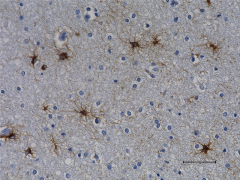
-

IHC staining of anti-GFAP (Cocktail) antibody (clone SMI 22) on formalin-fixed paraffin-embedded human brain tissue. Following antigen retrieval using Retrieve-All Antigen Unmasking System 3: Acidic, 100X (Cat. No. 927601), the tissue was incubated with a 1:2000 dilution of the primary antibody for 60 minutes at room temperature. BioLegend's Ultra-Streptavidin (USA) HRP Detection Kit (Multi-Species, DAB, Cat. No. 929901) was used for detection followed by hematoxylin counterstaining, according to the protocol provided. The image was captured with a 40X objective. Scale bar: 50 µm -

IHC staining of anti-GFAP (Cocktail) antibody (clone SMI 22) on formalin-fixed paraffin-embedded mouse brain tissue. Following antigen retrieval using Retrieve-All Antigen Unmasking System 3: Acidic, 100X (Cat. No. 927601), the tissue was incubated with a 1:2000 dilution of the primary antibody for 60 minutes at room temperature. BioLegend's Ultra-Streptavidin (USA) HRP Detection Kit (Multi-Species, DAB, Cat. No. 929901) was used for detection followed by hematoxylin counterstaining, according to the protocol provided. The image was captured with a 40X objective. Scale bar: 50 µm -

IHC staining of anti-GFAP (Cocktail) antibody (clone SMI 22) on formalin-fixed paraffin-embedded rat brain tissue. Following antigen retrieval using Retrieve-All Antigen Unmasking System 3: Acidic, 100X (Cat. No. 927601), the tissue was incubated with a 1:1000 dilution of the primary antibody for 60 minutes at room temperature. BioLegend's Ultra-Streptavidin (USA) HRP Detection Kit (Multi-Species, DAB, Cat. No. 929901) was used for detection followed by hematoxylin counterstaining, according to the protocol provided. The image was captured with a 40X objective. Scale bar: 50 µm -

Western blot of anti-GFAP (Cocktail) antibody (clone SMI 22). Lane 1: Molecular weight marker; Lane 2: 20 µg of human brain membrane lysate; Lane 3: 20 µg of mouse brain membrane lysate; Lane 4: 20 µg of rat brain membrane lysate. The blot was incubated with a 1:2000 dilution of the primary antibody overnight at 4°C, followed by incubation with HRP goat anti-mouse IgG antibody (Cat. No. 405306). Enhanced chemiluminescence was used as the detection system. -

ICC staining of anti-GFAP (Cocktail) antibody (clone SMI 22) on primary mouse astrocytes. The cells were fixed with 4% PFA, permeabilized with a buffer containing 0.1% Triton X-100 and 0.25% BSA, and blocked with 2% normal goat serum and 0.02% BSA. The cells were then incubated with a 1:1000 dilution of the primary antibody overnight at 4°C, followed by incubation with 2.5 µg/mL of Alexa Fluor® 594 goat anti-mouse IgG antibody (Cat. No. 405326) for one hour at room temperature. The cells were counterstained with Flash Phalloidin™ Green 488 (Cat. No. 424201) at a 1:100 dilution for 20 minutes at room temperature. The slide was mounted with fluoromount G with DAPI. The image was captured with a 60X objective. Scale bar: 50 µm
| Cat # | Size | Price | Quantity Check Availability | Save | ||
|---|---|---|---|---|---|---|
| 835301 | 100 µL | 248€ | ||||
Glial fibrillary acidic protein is an intermediate filament (IF) protein that is expressed by numerous cell types of the central nervous system (CNS) including astrocytes and ependymal cells. GFAP has also been found to be expressed in glomeruli and peritubular fibroblasts, Leydig cells of the testis, keratinocytes, osteocytes and chondrocytes and stellate cells of the pancreas and liver. GFAP is a type III IF protein that is closely related to its non-epithelial family members, vimentin, desmin, and peripherin, which are all involved in the structure and function of the cell’s cytoskeleton. GFAP is thought to help to maintain astrocyte mechanical strength, as well as the shape of cells.
Type III intermediate filaments are highly conserved and contain three domains, named the head, rod and tail domains. This rod domain coils around that of another filament to form a dimer, with the N-terminal and C-terminal of each filament aligned. Type III filaments such as GFAP are capable of forming both homodimers and heterodimers; GFAP can polymerize with other type III proteins or with neurofilament protein (NF-L). Interestingly, GFAP and other type III IF proteins cannot assemble with keratins, the type I and II intermediate filaments: in cells that express both proteins, two separate intermediate filament networks form.
To form networks, the initial GFAP dimers combine to make staggered tetramers, which are the basic subunits of an intermediate filament. The non-helical head and tail domains are necessary for filament formation. The head and tail regions have greater variability of sequence and structure. In spite of this increased variability, the head of GFAP contains two conserved arginines and an aromatic residue that are required for proper assembly.
Product Details
- Verified Reactivity
- Human, Mouse, Rat
- Reported Reactivity
- Chicken
- Antibody Type
- Monoclonal
- Host Species
- Mouse
- Formulation
- Ascites Fluid (contains 0.01M sodium azide).
- Preparation
- Ascites
- Concentration
- The concentration is not quantified as this product is sold as undiluted crude mouse ascites fluid. The concentration might vary from lot-to-lot and an estimated concentration would be 1-3 mg/ml.
- Storage & Handling
- Store at -20°C. Upon initial thawing, apportion into working aliquots and store at -20°C. Avoid repeated freeze-thaw cycles to prevent denaturing the antibody. For long-term storage, keep the antibody at -80°C.
- Application
-
IHC-P - Quality tested
ICC, WB - Verified - Recommended Usage
-
Each lot of this antibody is quality control tested by formalin-fixed paraffin-embedded immunohistochemical staining. For immunohistochemistry, a dilution range of 1:1000 – 1:2000 is suggested. For western blotting, a dilution range of 1:1000 – 1:2000 is suggested. For immunocytochemistry, a dilution range of 1:1000 – 1:2000 is suggested. It is recommended that the reagent be titrated for optimal performance for each application.
- Application Notes
-
Multiple protein fragments ranging from 38 to 48 kD have been reported in human CNS lysates resulting from caspase- and calpain-mediated cleavage of GFAP.
- Application References
- Product Citations
-
- RRID
-
AB_2565344 (BioLegend Cat. No. 835301)
Antigen Details
- Structure
- GFAP is a 432 amino acid protein with a molecular mass of ~50 kD.
- Distribution
-
Tissue distribution: GFAP is expressed by numerous cell types of the central nervous system (CNS) including astrocytes, ependymal cells, and Bergmann glia cells (protoplasmic astrocyte). GFAP is expressed in cells lacking fibronectin.
Cellular distribution: Cytoskeleton and cytosol - Function
- GFAP is a class-III intermediate filament and a structural constituent of the cytoskeleton. It is a cell-specific marker that is used to distinguish astrocytes from other glial cells during the development of the CNS.
- Cell Type
- Astrocytes
- Biology Area
- Cell Biology, Neuroscience, Neuroscience Cell Markers
- Molecular Family
- Intermediate Filaments
- Antigen References
-
- van Bodegraven EJ, et al. 2019. Glia. 10.1002/glia.23594.
- Pekny M, et al. 2019. Neurosci Lett. 689:45.
- Hol EM, et al. 2017. Cold Spring Harb Perspect Biol. 9(12)
- Gene ID
- 2670 View all products for this Gene ID
- UniProt
- View information about GFAP on UniProt.org
Related FAQs
Other Formats
View All GFAP Reagents Request Custom Conjugation| Description | Clone | Applications |
|---|---|---|
| Anti-GFAP (Cocktail) | SMI 22 | IHC-P,WB,ICC |
| Purified anti‐GFAP (Cocktail) | SMI 22 | IHC-P |
Compare Data Across All Formats
This data display is provided for general comparisons between formats.
Your actual data may vary due to variations in samples, target cells, instruments and their settings, staining conditions, and other factors.
If you need assistance with selecting the best format contact our expert technical support team.
-
Anti-GFAP (Cocktail)
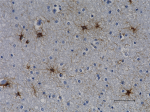
IHC staining of anti-GFAP (Cocktail) antibody (clone SMI 22)... 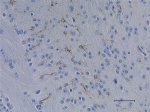
IHC staining of anti-GFAP (Cocktail) antibody (clone SMI 22)... 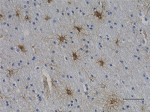
IHC staining of anti-GFAP (Cocktail) antibody (clone SMI 22)... 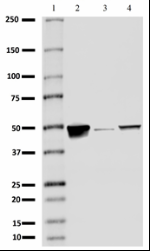
Western blot of anti-GFAP (Cocktail) antibody (clone SMI 22)... 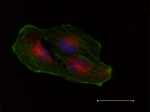
ICC staining of anti-GFAP (Cocktail) antibody (clone SMI 22)... -
Purified anti‐GFAP (Cocktail)

IHC staining of purified anti‐GFAP (Cocktail) antibody (clon... 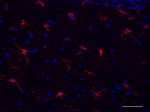
IHC staining of purified anti‐GFAP (Cocktail) antibody (clon... 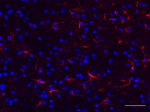
IHC staining of purified anti‐GFAP (Cocktail) antibody (clon... 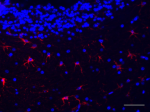
IHC staining of purified anti‐GFAP (Cocktail) antibody (clon... 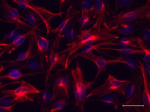
ICC staining of purified anti‐GFAP (Cocktail) antibody (clon... 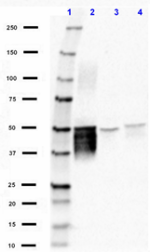
Western blot of purified anti‐GFAP (Cocktail) antibody (clon...
 Login / Register
Login / Register 












Follow Us